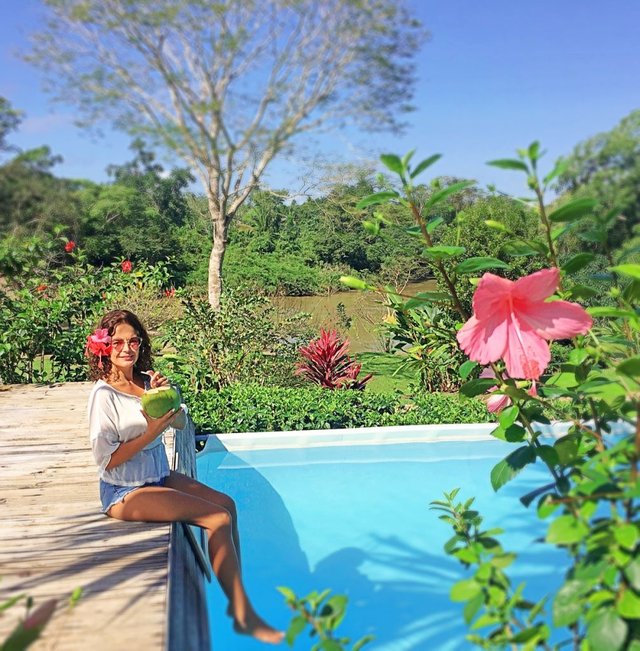THAI FRUITS - one of the reasons why you should come here!
POLISH VERSION ➡ click here
Seldom do we think of the country we're planning to travel, for the fruits that has to offer...🍌🍊🍍
However, in the case of Thailand 🇹🇭, it can definitely be one of the "WHY" arguments. Let me explain! 🥥🥥🥥

Thai fruits present the true richness of species, flavors and health properties. Unfortunately, exotic fruits, bought from the shelves of our supermarkets have just a little to do with fruits ripening in the tropical sun. In this country, even if we taste an ordinary banana, we will have the impression that we eat it for the first time ...
I am sure that everyone will find own favorite fruit, and for people on a vegan or fruit diet, it is a real paradise!
Below I will give you a list of fruits that you MUST try while you are in Thailand:
- DURIAN

Fruit considered by many people to be the tastiest fruit of the world, but controversial because of its fragrance (it is considered to be a fetid, reminiscent of blue cheese, and therefore not welcome everywhere - it can not be taken on a plane, public transport, to some public places) . Under construction similar to a chestnut, large particles are found under the barbed shell. Its consistency resembles a boiled banana, difficult to determine in taste. But you have to try it and decide if you like it. 😋 Easily available on every corner, sold in whole or in pieces.
Durian is a fruit that helps a lot in stomach problems, soothing irritations after eating spicy foods. In traditional medicine, leaves from a durian plant, or properly prepared juice, are used to lower fever and are also used in depression, anemia, to increase immunity or improve liver function. The fruit itself is considered an aphrodisiac, and the durian extracts have rejuvenating properties.
JACKFRUIT (Jacquard)
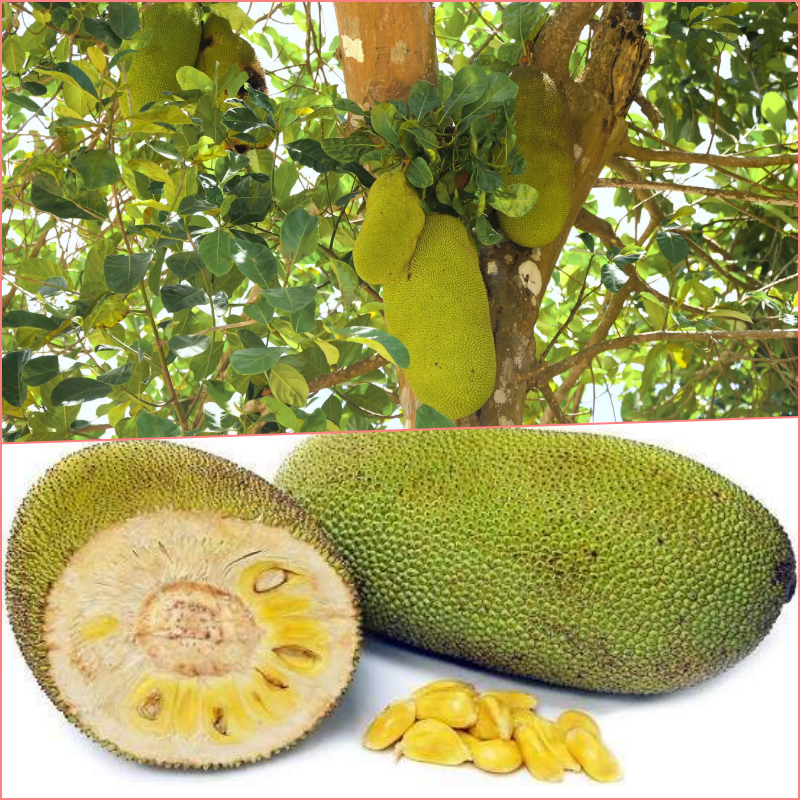
Fruit comes from India and it's very common in tropical climate. Fruits are similar to Durian, but much bigger - it's the largest fruit of the world growing on a tree. It has a juicy pulp with an intense aroma. Jackfruit is a caloric fruit, but at the same time contains many valuable vitamins, minerals and antioxidants, thanks to which it has pro-health effects. It can affect the regulation of blood sugar levels, support the cardiovascular system and even protect against cancer. Jackfruits are used both - for desserts and for main dishes.
According to the latest trends, the Jacquard is used as a substitute for meat, because it is prepared in a way reminiscent of its taste, appearance and texture.
It helps maintain electrolyte balance in the body and prevents the retention of fluid in intercellular spaces, as well as reduces the effect of stress and mental fatigue. Jackfruits are also a source of flavonoids and other polyphenolic compounds with the character of antioxidants, tannins, sterols and carotenoids. Due to its rich composition jackfruit has antibacterial, anti-blood pressure, anti-cancer and anti-aging effects.
- DRAGON FRUIT

Dragon fruit owes its name to a fanciful shape reminiscent of violet flames. Probably the prettiest fruit available in Thailand. From the outside, fanciful, after peeling, it resembles the most kiwis, both consistency and taste. It is oblong, sized of grapefruit. After cutting, it is white or light purple with visible, numerous black dots. It is best to eat with spoon - the pulp without skin is eaten; the fruit has no hard pits. It's a little bit sour in taste, the consistency resembles a nectarine or kiwi. Often served for dessert in restaurants. The taste is a little watery, which makes it not very expressive. It is definitely a fruit that looks better than it tastes (at least in my opinion).
The health properties of dragon fruit were already known previously to tribes inhabiting South America. Nowadays the scientists took a found out it's a great antioxidant. It can also prevent obesity and related diseases.
- LONGAN (Dimocarpus Longan)
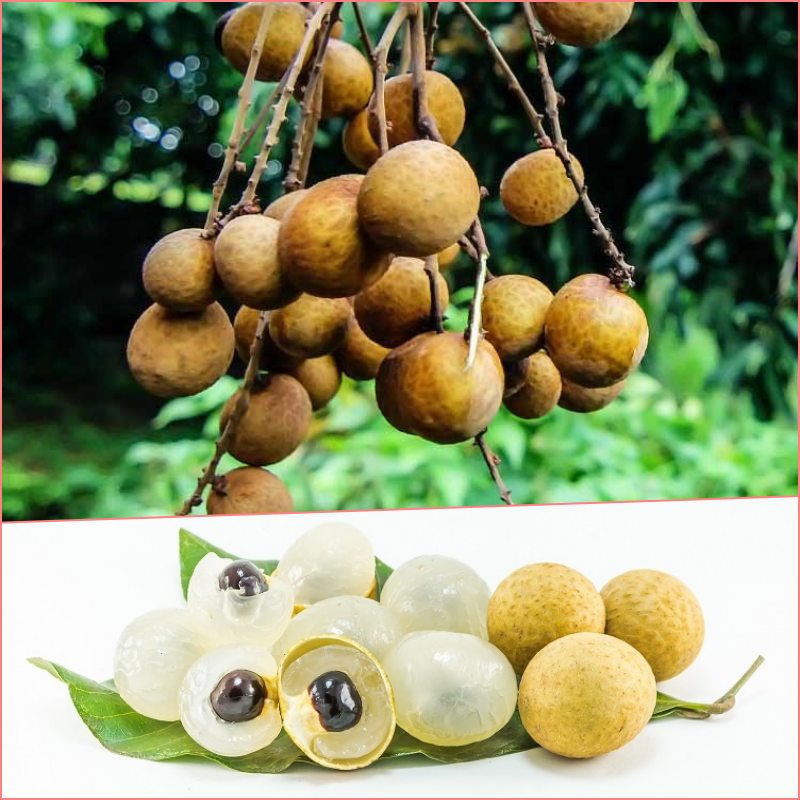
Probably the most popular fruit among Thai people. It looks very similar to lychee - no wonder, it's a close relative, but its taste is incomparable to any other fruit in the world. It's eaten also the same as lychee. It grows in bunches like grapes, and looks like small potatoes. Sometimes it has a noticeable "radish" aftertaste.
The fruit pulp is full of vitamin C, known for its antioxidant properties. In longan you will also find vitamins A, D, E, K, niacin, B vitamins, beta-carotene, folic acid, choline and lycopene.
- DUKU (Langsat)
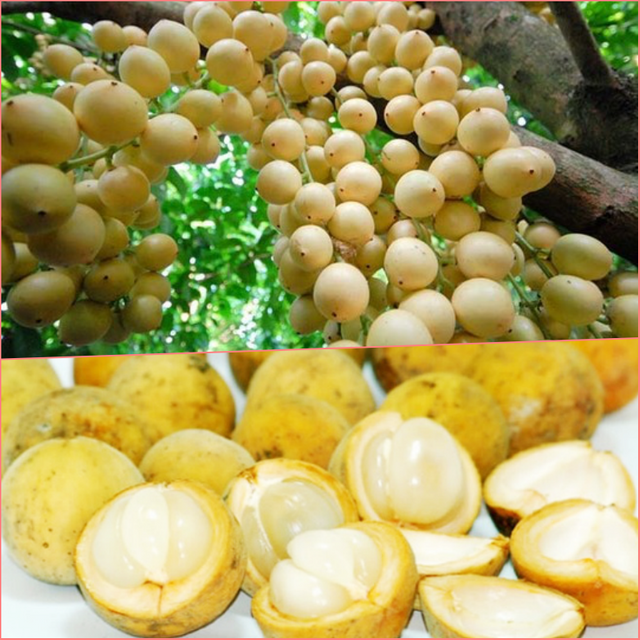
Langsat grows in bunches, the same as grapes. Each of the dull-yellow "grapes" of this fruit is the size of a large plum. Under the skin you will find segmented white pulp with the consistency of jelly. In the middle you will find pits, which you shouldn't bite, because of very bitter taste. The pulp of this fruit is sweet and slightly sour. Refreshing langsats are a real delicacy in tropics.
They have natural healing properties. They contain valuable minerals (iron, calcium, phosphorus), they also provide for the body with protein and vitamins from the B and C group. Its frequent consumption prevents infections, strengthens the body and stimulates the immune system. They are recommended to people struggling with overweight, because it is low calorie (33 kcal in 100g of fruit) and does not contain fat.
- RAMBUTAN
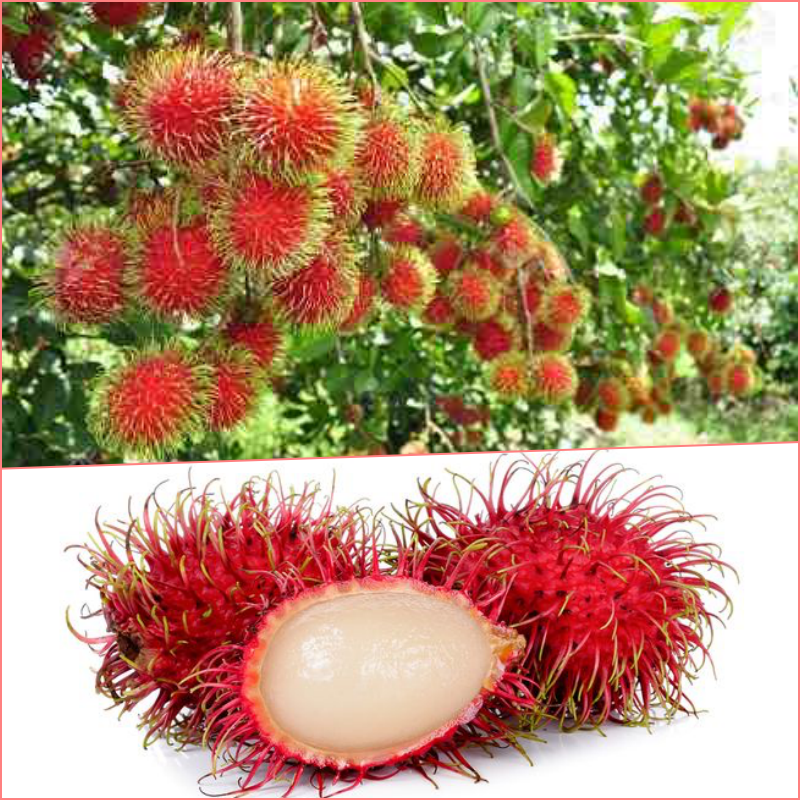
It is a fruit about the size of a large walnut. Usually it's yellow or red. Its surface is covered with numerous hairs. The edible interior of the fruit - whitish, jelly-like and aromatic flesh - has a sweet or sour taste. The seeds inside should be removed as they are inedible. Acidic varieties of fruit are eaten after cooking, sweet - raw.
Rambutans have the power of vitamins and minerals. In 100 grams of fresh fruit there is 66% of daily dose of vitamin C. The fruit is distinguished from others by its high content of copper. The body needs a small amount of this mineral, but its deficiency can lead to anemia, problems with bones and joints, weakness and reduced immunity. Rambutan fruits are also a source of vitamins from B group, potassium, calcium, magnesium, manganese and iron.
- MANGOSTEEN
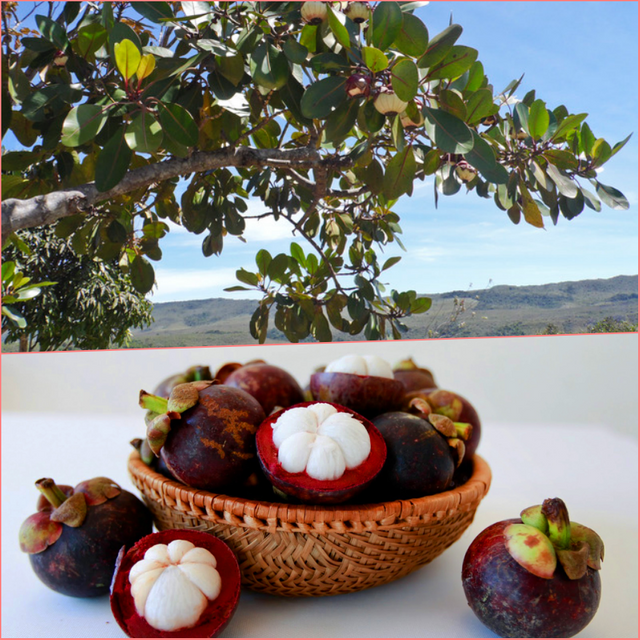
I'm lovin' it!!! The similarity of the name is probably not accidental, because mangosteen resembles mango in taste.
They are round, dark purple berries, 4-7 cm in size. They are covered with a dry, thick skin, under which is hidden a white juicy pulp with several pits. Mangosteen is sweet and juicy, slightly tart. Very often it's compared to the taste of apricots, oranges, pineapple and even strawberries - the impressions are so different that in order to verify them, we only have to taste this extraordinary fruit.😋 During peeling and eating mangosteen you need remember of their one, unpleasant feature, namely: although the fruit juice is white, it can cause difficult and even impossible to wash stains. We eat it, crushing the shell to get delicious garlic-shaped white particles from the inside.
Mangosteen has antioxidant and anticancer effects, antiparasitic activity, diuretic and laxative. It's used in the treatment of hypercholesterolemia, prevents aging, thanks to apoptotic effect, supports the treatment of rheumatic diseases, menopausal symptoms and has a slimming effect.
- PASSION FRUIT (Maracuya)
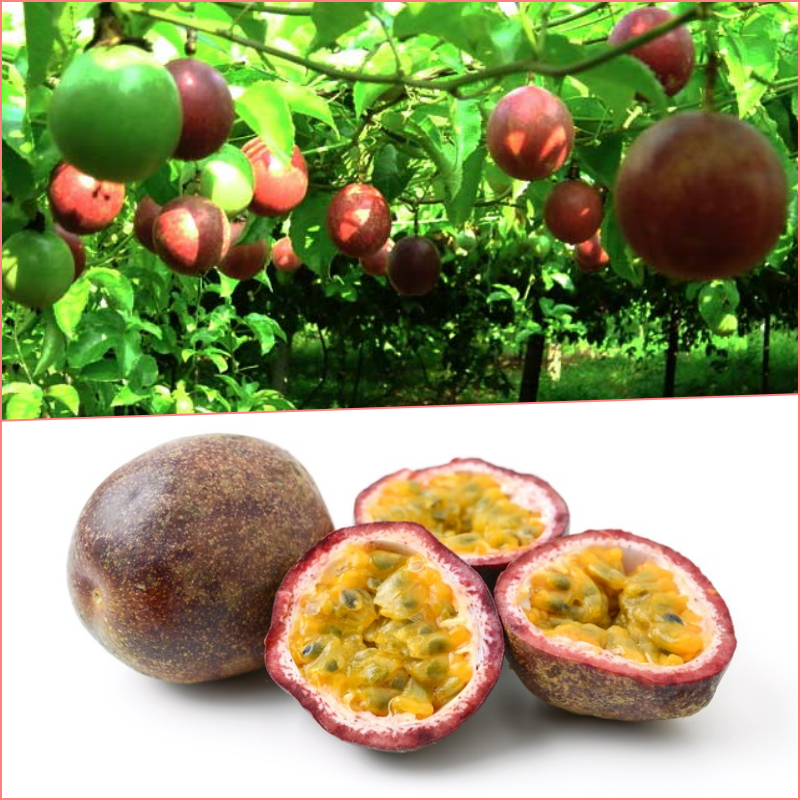
It is a sweet-sour fruit with jelly-like pulp. Most often found in bazaars or as a component of fruit smoothies.
Passion fruit is used as a soothing cough and strengthening the heart, and its pits are used as a sleeping agent. Some people eat maracuas to lower blood pressure.
- ROSE APPLE
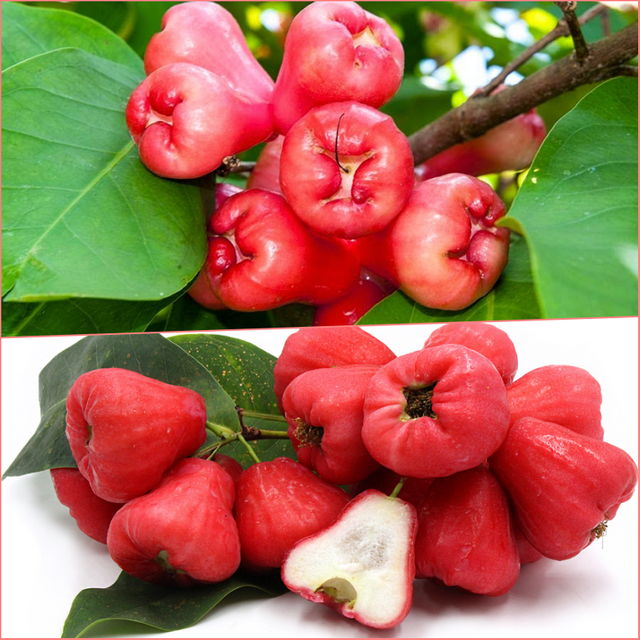
The fruit has the shape of a pear, in taste and texture has something of rhubarb. Juicy, not too sweet.
Although it is not my favorite Thai fruit, it is worth considering because of antiseptic, antibacterial, antifungal, antiviral, antiparasitic, anti-flatulence, slightly anesthetic, stimulant, analgesic, antiemetic, and diastolic properties.
In addition, it is also worth trying also those better known to us fruits, those that you can easily find on store shelves, but in Thailand they taste really exceptionally well: 😋
Bananas- originally, most likely they come from Malaysia, where they were grown more than 7,000 years ago. In Thailand we have over 20 species of bananas to try, and I assure you that you will delight with taste and aroma! It's a fruit that contains many minerals and numerous vitamins. Bananas are first and foremost a treasury of potassium, which is why people who struggle with hypertension should reach for them. Bananas will also help children with ulcers and diarrhea. On the other hand, the banana peel is a proven method for warts, mosquito bites and teeth whitening. 🍌
Pomelo (Som-oh) - in Poland we know them from a variety imported from China. It is a grapefruit variety with a more sweet taste and is significantly larger. Thai Som-o are found in varieties - yellow, green and red. Thai people sometimes add a bit of salt to bring out the best taste of fruit. Pomelo out of the other citrus fruits is the richest in vitamin C (about 61 mg / 100 g), which is why it strongly strengthens the immune system. In addition, due to the high content of potassium, it regulates blood pressure and heart rate.🍊
Papaya - despite the fact that the fruit comes from Mexico, its fans will certainly not be disappointed with a visit to the Thai market, where this delicious fruit is one of the cheapest. Its pear shape and green skin and after cut - sweet yellow (or orange) pulp with characteristic black pits. Papaya is low in calories and does not contain cholesterol, besides it is a rich source of vitamins and minerals - contains, among others, a lot of vitamin C (more than popular citrus), vitamin A, B vitamins, flavonoids, potassium and calcium.
Pineapple- they came to Thailand from Central America and now this is where the world's largest plantations of this fruit are found, primarily due to the excellent conditions on fertile soils. Thai varieties of pineapple have very unique taste qualities. Due to the scale of production, it is the cheapest fruit here - it usually costs about 5-10 cents per piece! The values of pineapple have long been used in unconventional medicine - they are used, among others, in the treatment of respiratory infections, to improve digestion or to help in healing wounds and fractures, and even to remove parasites from the digestive tract. Since the 1970s, pineapple has also been used by doctors. It's all because of the content of vitamins, minerals, fruit acids and bromelain (bromelines) - a group of enzymes with many medicinal properties. Bromelain has analgesic properties, is excellent for osteoarthritis and rheumatoid arthritis.🍍
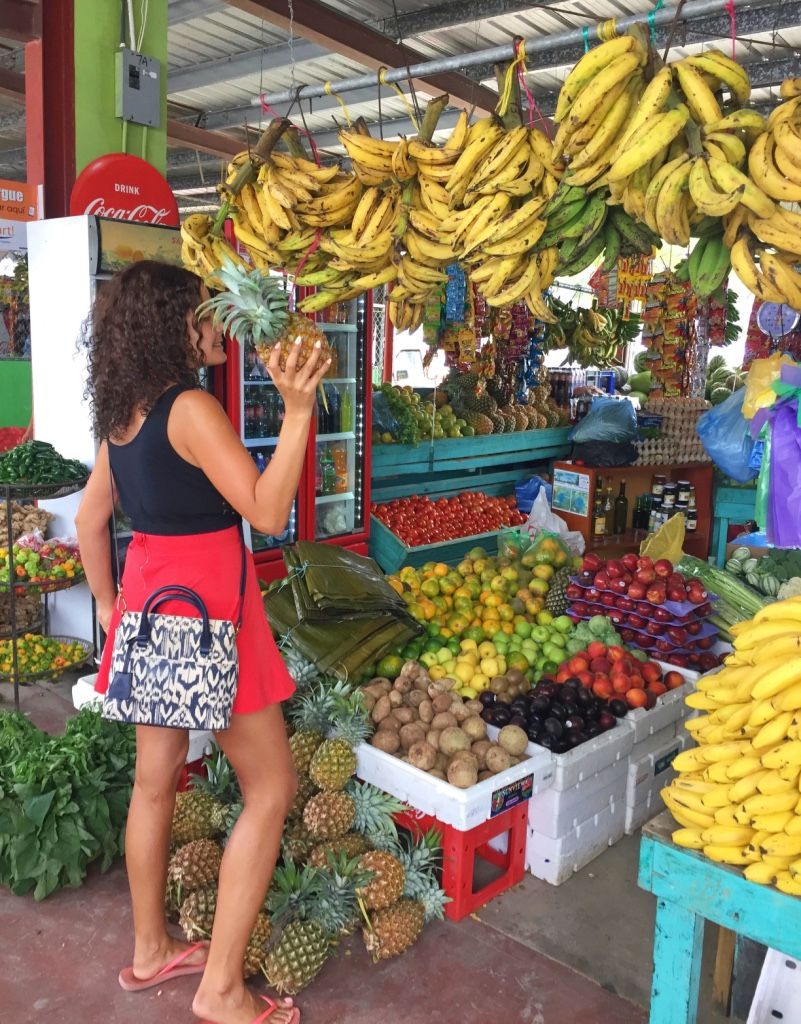
Mango - in Thailand, mangoes are available throughout the year, but the best and the sweetest are in the season, ie from March to the end of June. Annually, Thailand exports over 3 thousand tons of this delicious fruit. Substances that contain mango may inhibit the development of breast cancer and colon cancer - these are the results of a marriage study of scientists from Texas AgriLife Research, which were published by the EurekAlert website! In addition, eating mango helps reduce insulin resistance and improve glucose tolerance.
Coconuts - in Thailand, they occupy a similar place as potatoes in Polish cuisine. You will find them on every corner and on every shel - they are sold fresh, chilled and with a straw, ready to drink their juice. Thai coconuts grow where they fall, this popular tree can be easily found in the middle of the city. They are smooth and green. After drinking a drink, do not forget to pick with a spoon the white pulp - a fleshy lining of hard nut shell, which is rich in fiber, potassium, magnesium and phosphorus, as well as folic acid. 🥥
Did I encourage anyone to a Thai culinary journey? 🤔
